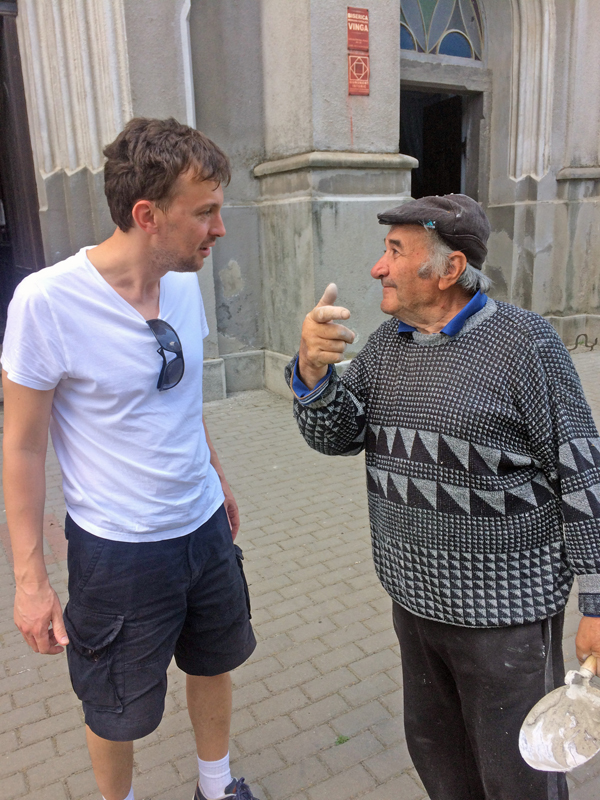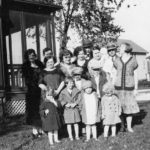(This is the second of a two-part series.)
By Dan Ebener
How much would you do to re-build the church? What if everyone else gave up and it was just up to you? How would you lead a re-build of the church?
I reflected on this question this summer while traveling by car across central Europe with my friend Rino Medic. We visited many places that are not on the typical tourist list of places to go, especially the rural areas of Croatia, Romania, Serbia, Hungary and Bosnia.

Dan Ebener’s traveling companion Rino Medic talks with a Hungarian man trying to rebuild a church by himself.
Life slowed down. We saw little evidence of the fast-paced outside world. It was like our car was a time machine, taking us back into the 1950s: well-tended vegetable and flower gardens, even on steep mountain slopes; people bent over their fields and gardens pulling weeds or harvesting fresh produce that was being sold at roadside stands; people of all ages walking along the roadside or riding old-fashioned bikes; handmade tools, low-tech tractors, carefully built hay stacks — and even scarecrows!
Every village had its unique character but, in almost every case, you could see at least one steeple or minuet from a mile away. You can learn a lot about the local religion and culture by stopping to visit these mosques and churches — along with their adjoining cemeteries. The stained glass, statues, icons, pictures, colors, pews, altars, tombstones, paintings and architecture all tell a story. One thing that struck me was the number of crucifixes we saw, especially in Romania, not only in front of every church, but along the sidewalks and roadways.
Along the way, we met one older gentleman, with his trowel, mud pan and bucket, repairing the cement on the outside of a small Catholic church (see photo). We were in an isolated village in Hungary which also had an Orthodox church and a mosque. The Catholic community had been attending Mass in a family home because the church had reached such a state of disrepair.
The church had been closed for several years. Yet here was this man, happy as could be, with a smile that could light up the world, plastering the outside walls of the church. Asked why he was doing it, he just said “someone needed to do it … it needed to be done.”
I’ve thought a lot about this man since our chance encounter. What does it take to re-build a church? What can one person do? Obviously, a church re-build is about more than the physical structure. And it certainly is not a job that one person can finish alone. But if one person wants to start a re-build, what can they do?
It seemed that this man had found just the answer: Model the way, one step at a time, one smooth wall at a time. The joy with which he approached his job seemed contagious. It might be just the right ingredient to inspire others to join him — and eventually, he would need others.
When one decides to lead any venture, the first step is to set the example, to show others the way into a better future. When a person feels passionate about a desired change and begins to influence others to join him or her, that person is demonstrating leadership.
Re-building the church is a responsibility for all of us. Like all organizations, the church needs new life breathed into it from time to time. Hopefully, we don’t have to wait for the church to be as rundown as this church was before we pick up our trowels and begin patching our holes.
It’s always time to find new ways to be church to each other.
(Dan Ebener is director of stewardship and parish planning for the Diocese of Davenport. and a professor in the St. Ambrose University Master of Organizational Leadership program.)











